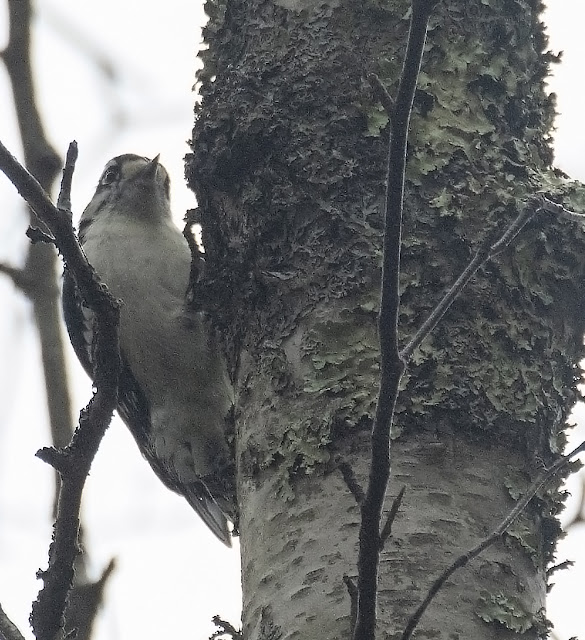At the far end of the Access Trail woodland shaw, where we put the extra brick footings down the other year, there was a small Field Maple with a few folded leaf tip lobes that looked like
Caloptilia mine follow-on folds.
This turned out to be
Phyllonorycter acerifoliella, (Zeller, 1839), the Maple Midget, a bi-voltine leaf miner. The mines can be found in small numbers in May and, more frequently, in September and October. These mines are presumably partly the current generation of mines, and so some should really contain larvae or pupae that are about to over-winter.
The pupa should be blackish brown in a tight, thin-walled cocoon that is attached to the floor of the mine; all frass is accumulated in the opposite corner of the mine.
First seen from the upperside, then the underside:
and here is another example:
This is another, more recent mine, which I cannot identify, as it doesn't look at all like typical
Phyllonorycter acerifoliella. It could possibly be
Phyllonorycter joanissii from Norway Maple, which this mine closely resembles, but this is generally judged very unlikely. In the past Andy Banthorpe has identified this type of mine away from the edge as atypical
Phyllonorycter acerifoliella.
Again, first from the upperside, then the underside:
a closer view:
Hopefully these
Phyllonorycter acerifoliella folded leaf lobe mines will not be confused again with
Caloptilia leaf lobe folds, as I first did!!
Now this looks more like a
Caloptilia:
Viewed first from the upperside, then the underside:
On Field Maple,
Acer campestre, in the UK this would seem to be most likely to be
Caloptilia semifascia (Haworth, 1828), the "Maple Slender". This is found on the Field Maple in the UK
The very early mine is a gallery leading soon to a small triangular or squarish blotch. Later the larvae move out to form up to three successive tubes or cones by folding the tips of leaves downwards, in which they live. On this plant there were usually only one or two folded leaf lobes per leaf. The larvae are said to be greenish with a lighter head.
The mines are supposed to occur in June - July and the ones shown here do generally look quite fairly old. Pupation is said to be in a flat, parchment-like, shining, yellowish white cocoon on either side of the leaf, but generally near the margin. I imagine that pupae are quite difficult to find in July(ish), and I haven't found any yet. The moth then flies until October, and after hibernating, again in May, before egg-laying.
However, another minor possibility on Field Maple is Caloptilia rufipennella (Hubner, 1796), which is found almost entirely on Sycamore and only rarely on Field Maple in the UK, although apparently on a wider range of Acers, including again Field Maple, on the continent. This species was only first identified on any Acer species in the UK in 1970, and is still a bit local in its distribution although spreading well. Because of its rarity on other hosts, at least according to current records, we can fairly discount it as a likely record in this case. It also has to be said that the information about host preference on different web-sites is quite contradictory in my view.
The initial feeding blotch mines are very difficult to find, and distinguish from other feeding marks, again in my limited experience, and I haven't identified one at all yet.

















































